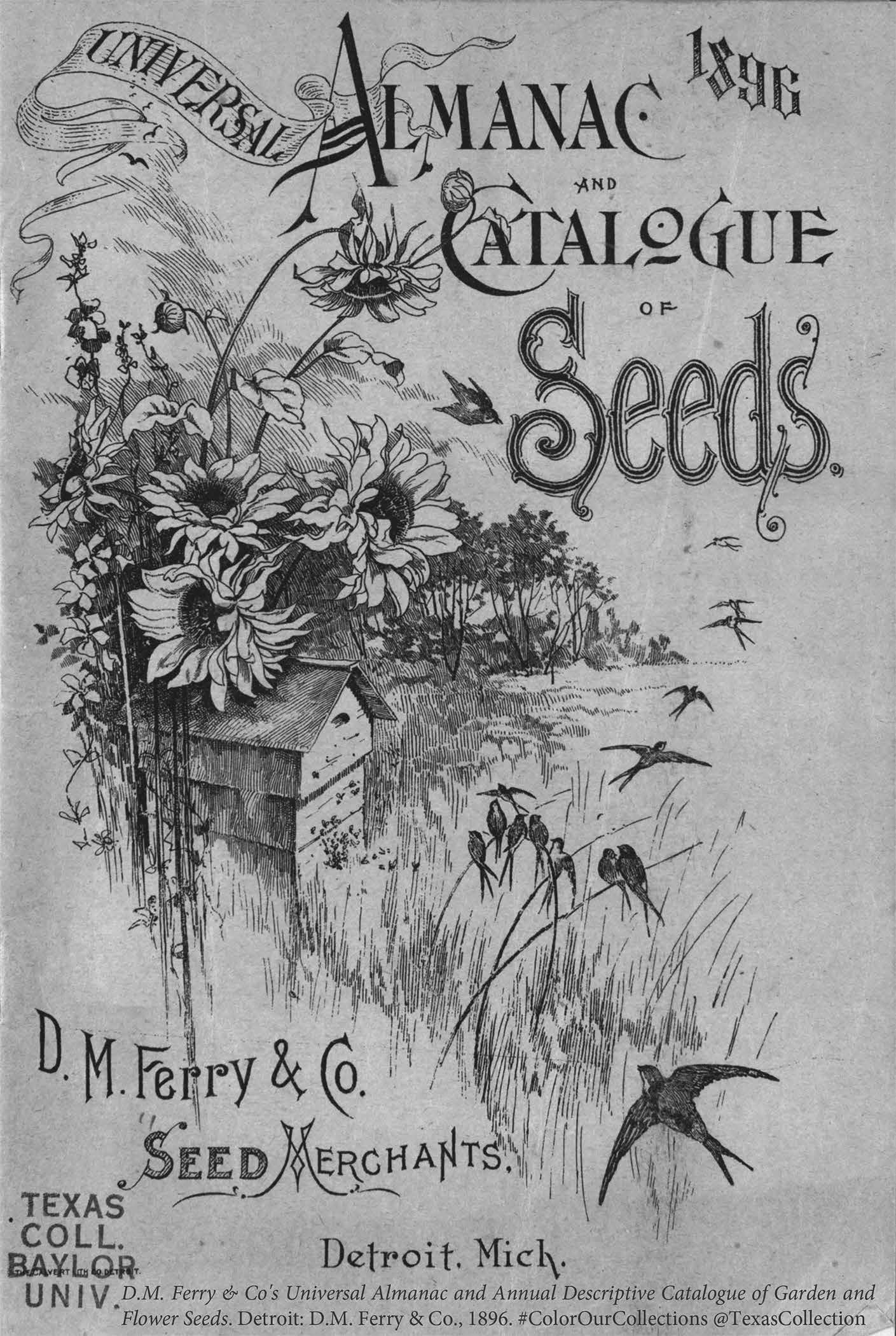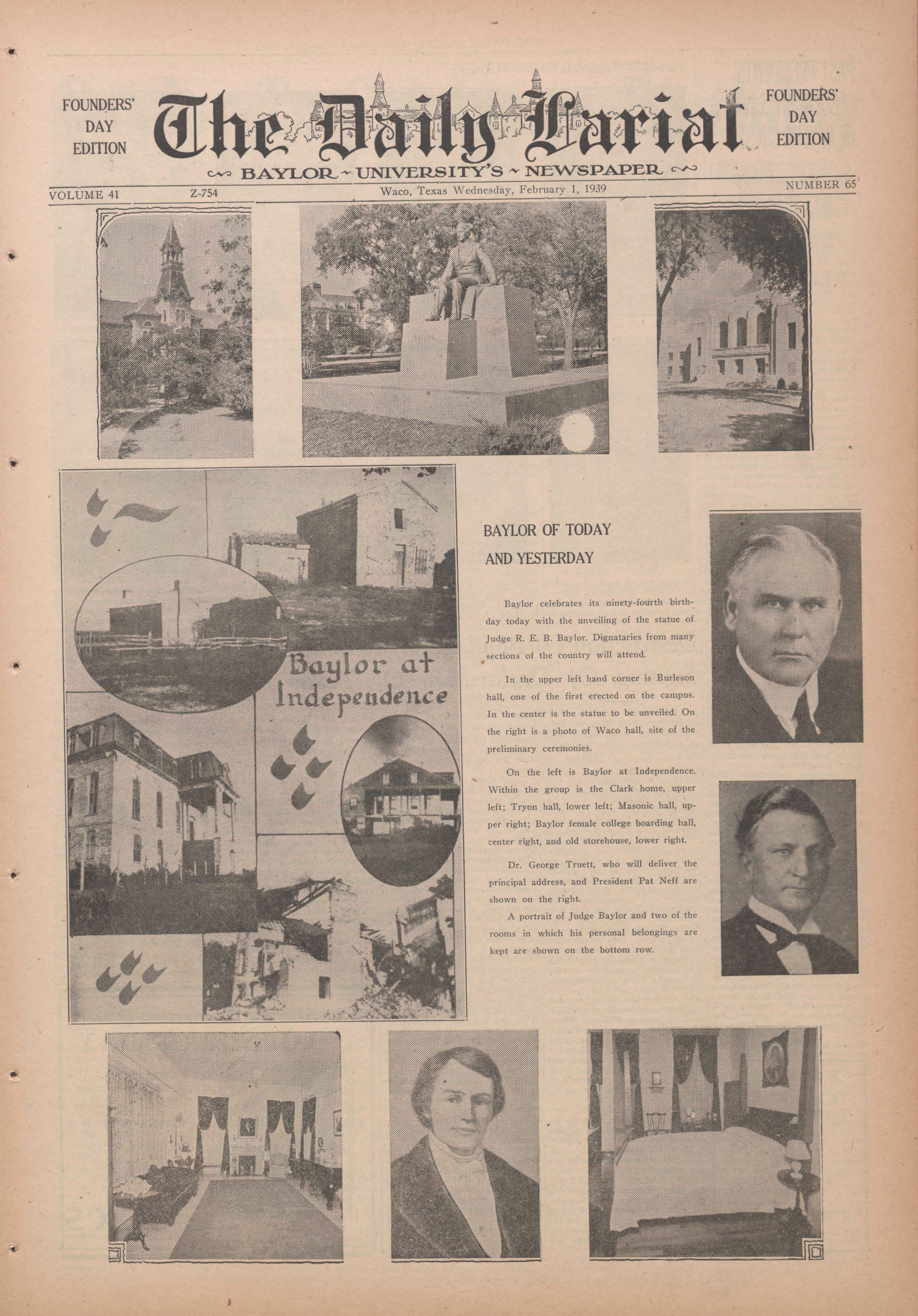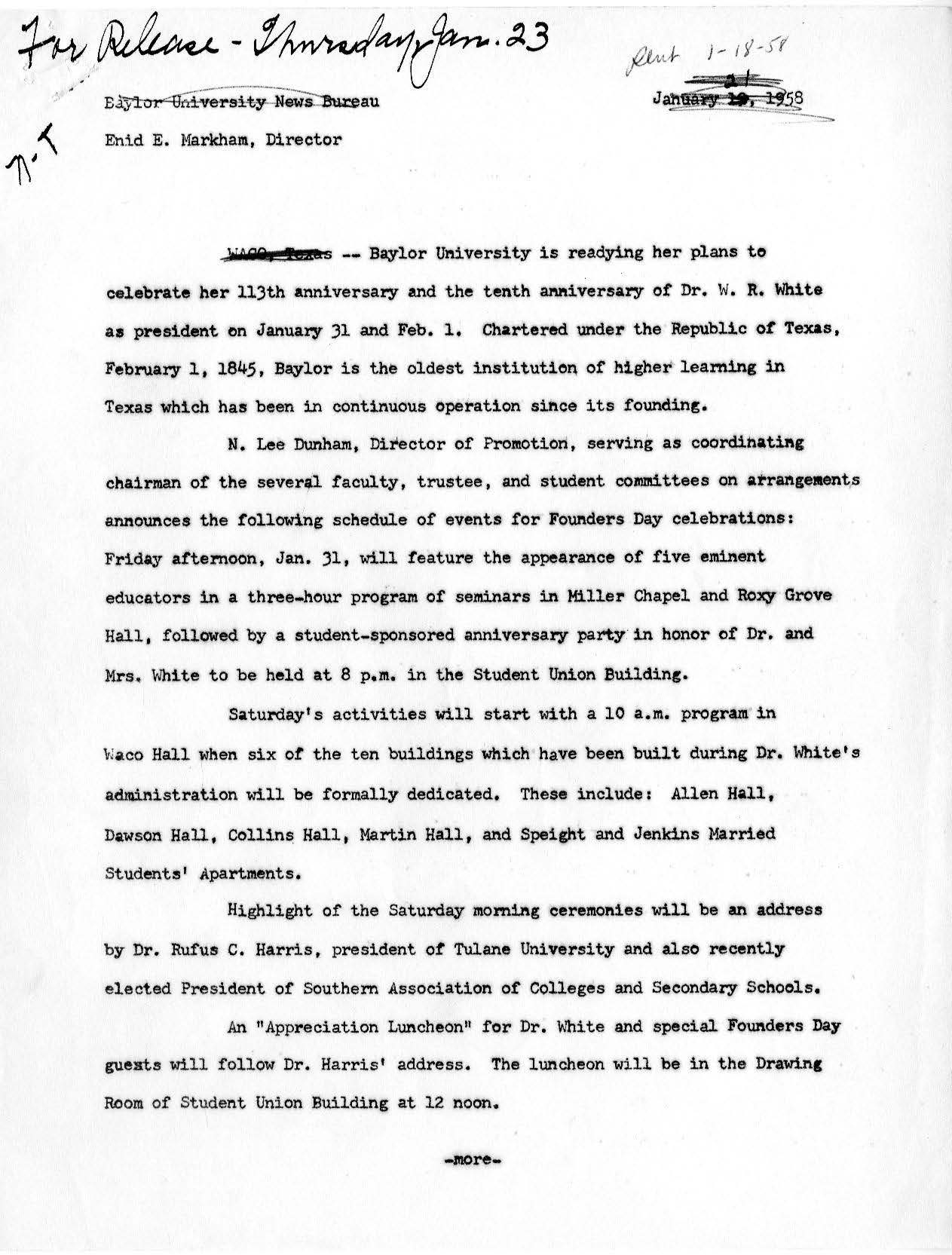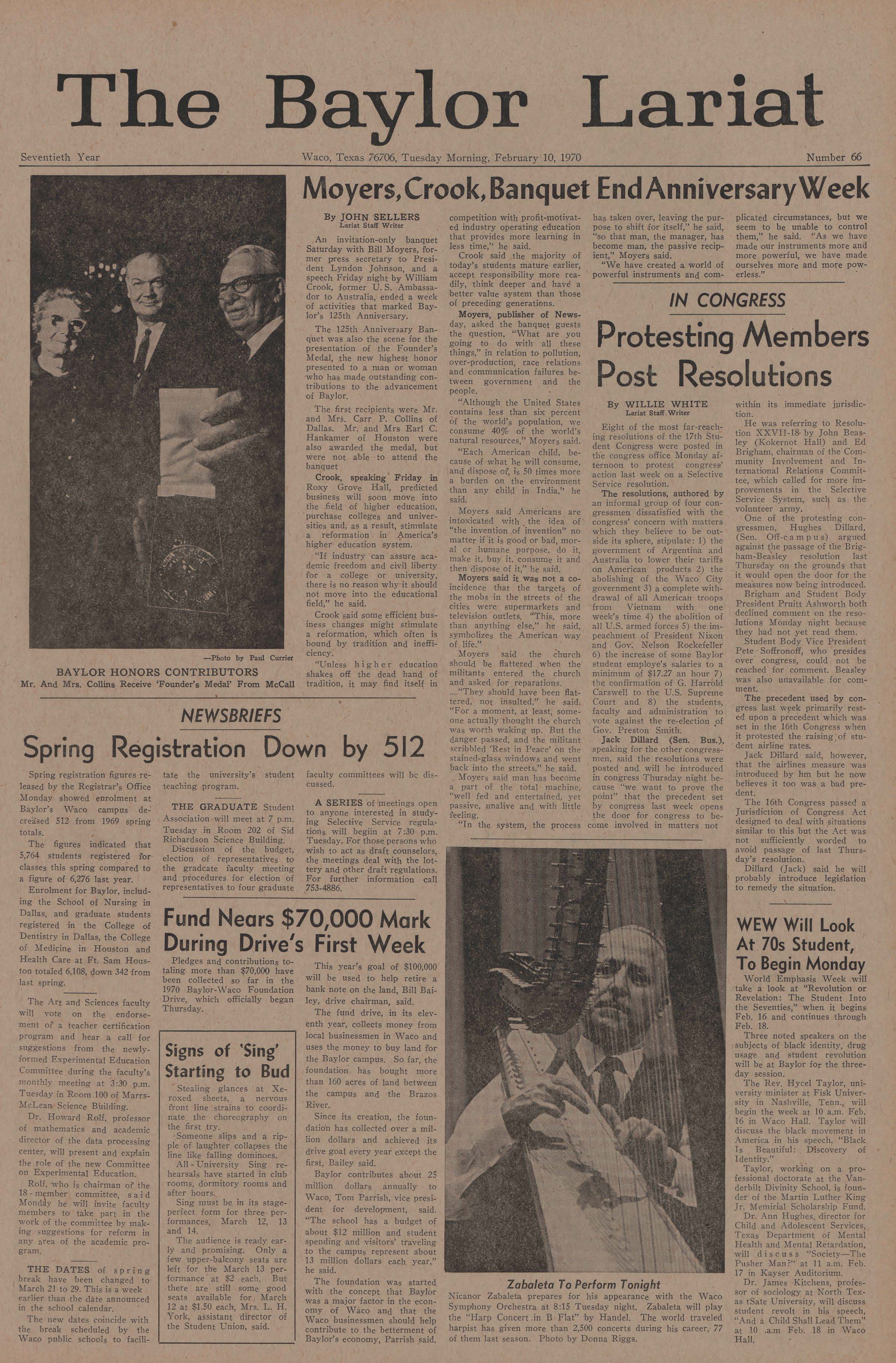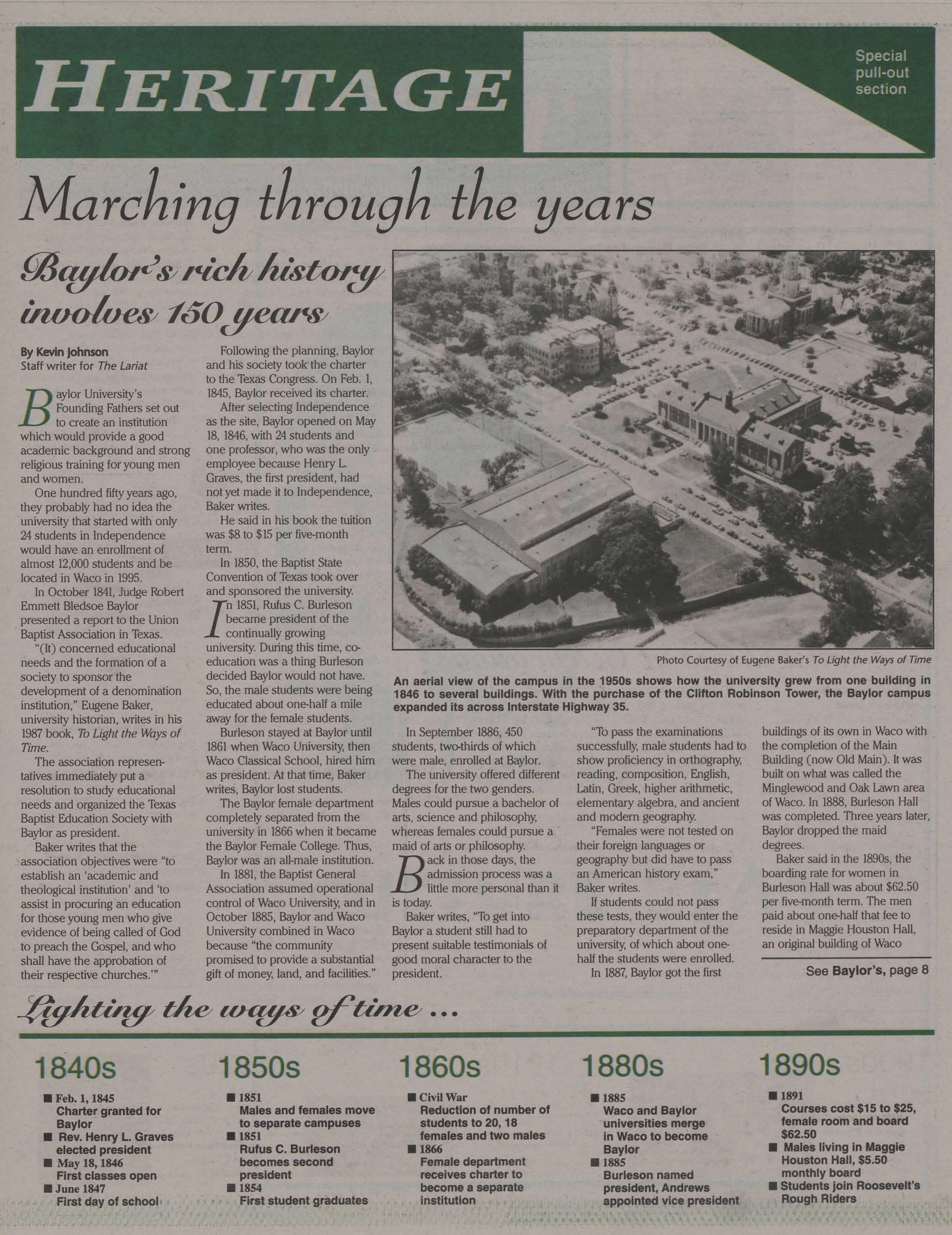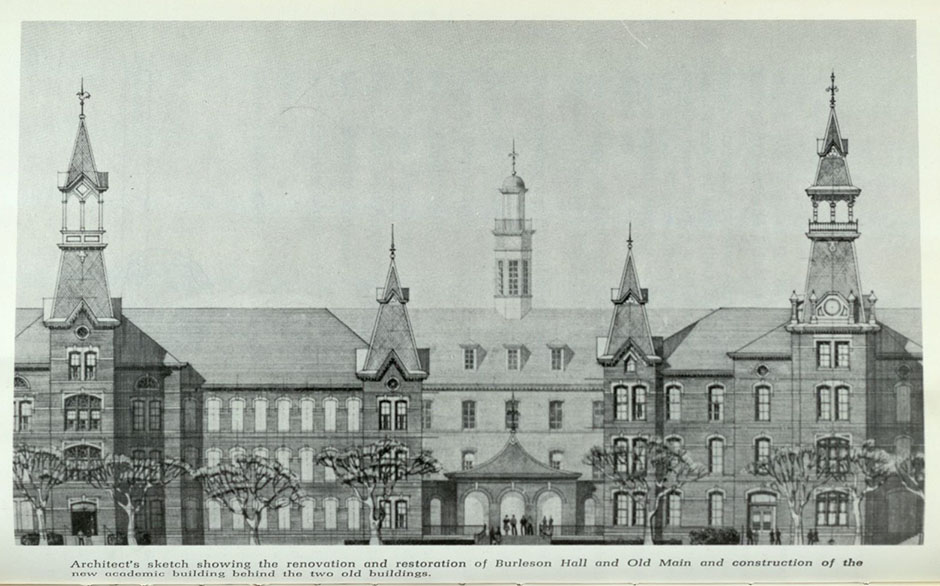
By Geoff Hunt, Audio and Visual Curator
General Tire & Rubber Co. came to Waco in late 1944, the company’s second plant after its Akron, Ohio, headquarters. The plant was originally constructed to supply equipment for the U.S. Armed Forces during World War II, and by January 1945, production began. According to William O’Neal, General Tire’s president, the new Waco location (off Business 77, near Orchard Lane) was established on acknowledging that “the war has dissipated the old idea that all manufacturing had to be done in the north, that the south could hope to be no more than an agricultural area.” O’Neal was guided in his decision to bring the company to this area by Congressman W.R. Poage of Texas.

Products coming out of the Waco plant included truck tires for the U.S. Army and Navy, and other rubber-based equipment such as rafts and specialized balloons for wartime use. After the war, once it acquired nearly full control from the U.S. government, the Waco plant began switching from military production to consumer and industrial based products. In November 1945, the first passenger car tire was built and soon after, 2,500 were made daily. By 1954, the plant doubled in size, and 6,000 passenger car, truck, tractor, and farm service tires were being built daily.

A very large surge in tire production occurred in 1955 when the company received a contract to make original equipment tires. Cars made by General Motors rolled off of the automaker’s assembly lines equipped with tires made in Waco. At the time, some models of General’s tires included the innovative tubeless design called the “Dual 90.” Other domestic automakers used Waco-built General products, and the plant ended up making millions of tires that rolled on American roads—and beyond.
By 1957, due to demand, the Waco plant completed a 40 percent expansion in production capacity. By 1984, after many years of continued success, the size of the plant had grown enormously, with building space covering “49 acres under roof on 139 acres of land.” (In 1944, the original area covered “233,000 square feet of manufacturing space.”)
When the facility in Waco celebrated its 40th anniversary in 1984, reference was made for the next 40-year celebration, but this was not to be. In November 1985, General Tire & Rubber Co. announced the closure of its Waco, Texas, plant, which had a staff of more than 1,400 personnel, an annual payroll of $42 million, and was responsible for $18 million monthly in expenditures into the the area’s economy.
After news of the closure, the number without jobs amounted to nearly 10% of Waco’s manufacturing work force. Following the news, an editorial in the Waco Tribune-Herald stated: “The announced closing of Waco’s General Tire plant leaves a cavernous void in Waco’s economy. It could be compared only to Baylor University pulling up stakes.” The last employees to leave the plant were 130 workers who remained at the General Tire & Rubber mixing facility, making bulk rubber to supply other General plans, until December 1990.
The Waco General Tire & Rubber Co. plant gave livelihoods for thousands of men and women throughout its 41 years in operation. However, sudden and drastic changes in the automobile industry, inability to adapt or replace machinery to keep up with changing tire designs and demands, and competition from imports, all contributed to the demise of what was once Waco’s largest manufacturing facility.

The old General Tire plant in Waco remained mainly in disuse for many years, but the empty facility still had enormous potential. The company’s main building was heavily renovated in 2010 for use by the Baylor Research and Innovation Collaborative (BRIC). It now uses more than 300,000 square feet of the facility. Baylor University, Texas State Technical College, and leading industries utilize this space for advanced research in engineering, air science, quantum optics, and more. Students are able to experience some of the latest innovations in these fields and get hands-on experience in their fields of study—helping Waco continue to innovate and train a new generation well into the future.
See more photos in our General Tire & Rubber Co. album on Flickr:
Sources:
“Industrial and Agricultural Development.” Annual Report Edition- WACO- The Hub of Texas: Official Publication of Waco Chamber of Commerce Waco, Texas (Waco, TX) Jan. 1944.
“Colorful Ceremony to Mark Dedication Of General Tire Plant Here On November 13th.” WACO-The Hub of Texas: Official Publication of Waco Chamber of Commerce Waco, Texas (Waco, TX) Oct. 1944.
“General Tire Officials, Newspapermen See Texas’ First Tire Plant Dedicated In Waco.” WACO- The Hub of Texas: Official Publication of Waco Chamber of Commerce Waco, Texas (Waco, TX) Nov. 1944.
”General Tire Plant Here Grew Out of War Needs” Waco Tribune-Herald (Waco, TX), Oct. 31, 1948.
“Rubber Plant Employment Five Times 1944 Strength.” Waco Tribune-Herald (Waco, TX), Jan. 20, 1954.
“General Tire Completing 40 Percent Expansion, in Waco.” Waco Tribune-Herald (Waco, TX), Feb. 10, 1957.
“Poage Recalls Beginning for General Tire Here.” Waco Tribune-Herald (Waco, TX), Apr. 9, 1972.
“General Tire Celebrates 40 Proud Years in Waco.” Waco Tribune-Herald (Waco, TX), Oct. 14, 1984.
“General Tire Latest in Series of Shutdowns.” Waco Tribune-Herald (Waco, TX), Nov. 6, 1985.
“Waco’s Economy Suffers Blowout.” Waco Tribune-Herald (Waco, TX), Nov. 6, 1985.
“Tire Plant to Close Division: Monday Last Day for 130 Employees.” Waco Tribune-Herald (Waco, TX), Dec. 31, 1990.
“Tire Company was Force in Local Economy for Decades.” Waco Tribune-Herald (Waco, TX), Oct. 23, 2009.

